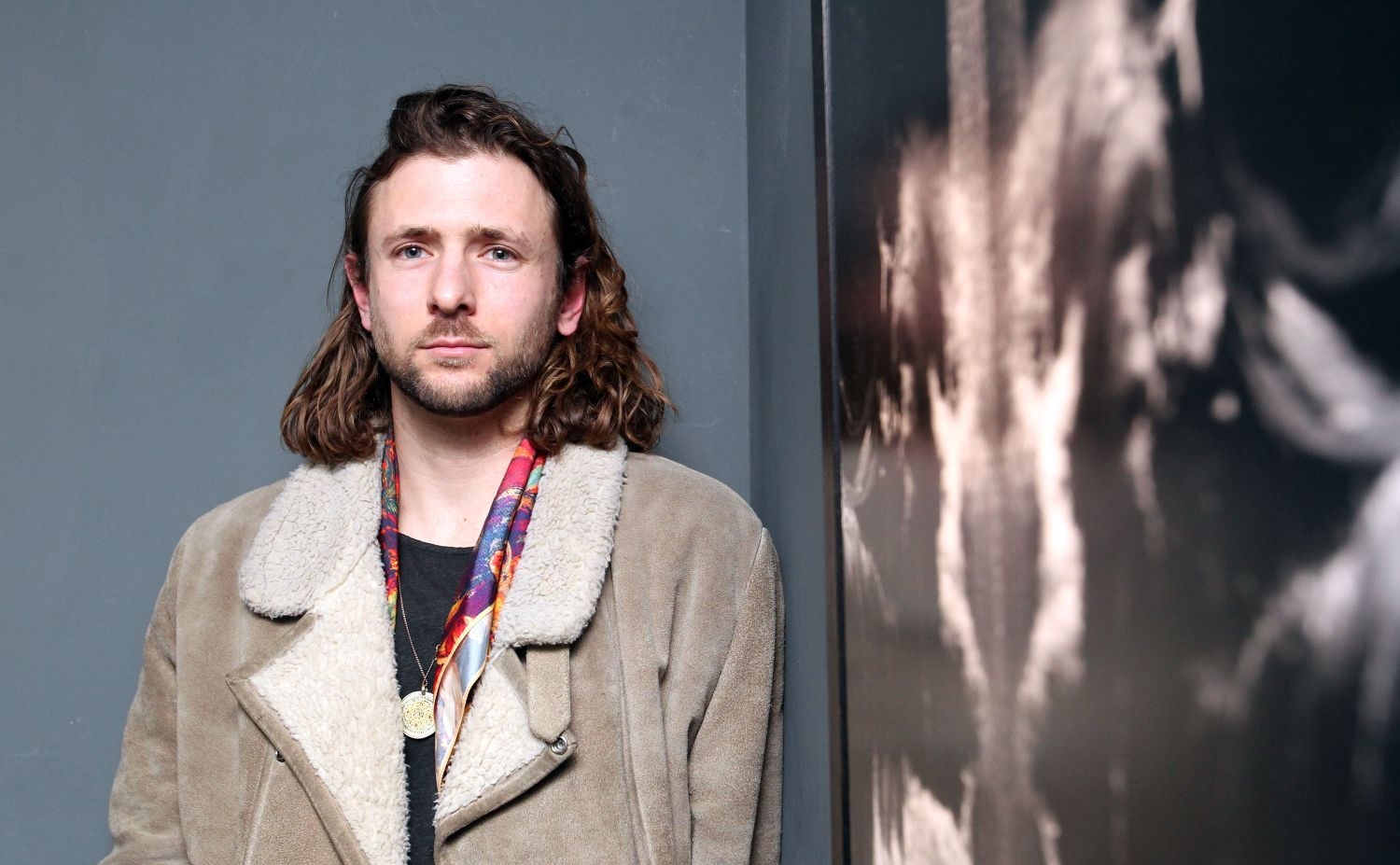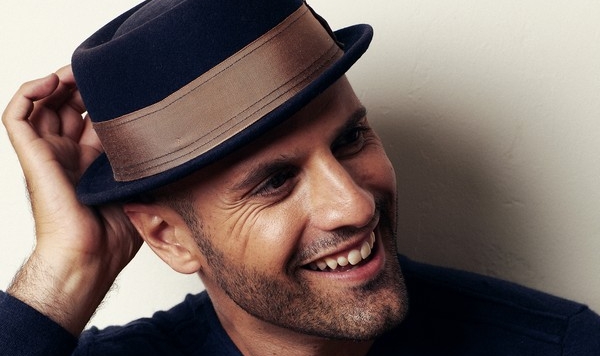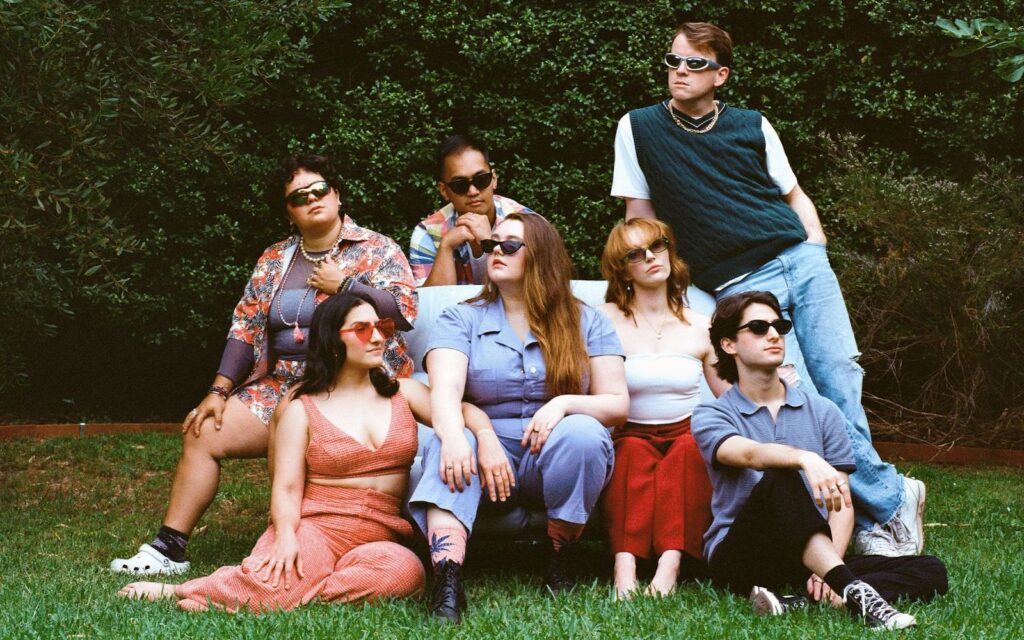How did Podhajsky get involved in Sugar Mountain? “I’m good friends with Pete Keen, one of the founding members,” he replies. We go way back. I showed some pieces in the first Sugar Mountain in 2011.” Podhajsky is keeping quiet about what he’s showing in January but he did let on that some of the work from a recent exhibition in Paris will feature. “Nothing’s been completely finalized so I don’t want to say too much but I’ll be working with the space and with another artist, creating something that works together.” Podhajsky is in his studio in Shoreditch when Beat speaks to him. What took him to London? “It’s a massive cultural and creative hub,” he said. “I wanted to test myself in a larger pool. I’ve been really lucky. I get to work with musicians and bands I really like, who I’ve admired for a long time. I try and work with artists who I respect, whose music I would want to listen to.”
We ask Podhajsky about the impact of the Innerspeaker cover, which launched one of the most enviable graphic design careers ever: he’s worked withbandslikeFoals, Grimes, The Horrors, Lykke Li, Bonobo and many others as well as for companies such as Nike, Sony Music, Vice, Warner Records, Warp Records, Smart Car, Atlantic, XL, 4AD, Ninja Tune and Modular Records. He’s regularly sought after by advertising agencies. Was Podhajsky a fan before Tame Impala asked him to do the cover? “I was a fan, yeah,” he answers. “Tame Impala are like an old school band; their fans really love them, they’re fanatic and they want to know everything about them. I’d emailed them about doing some artwork for them and I don’t think they ever got the email. Then months later they wanted to work with me, I told them I’d emailed them and they went back and found that email.”
After training in graphic design in Byron Bay then working in other people’s studies and getting fed up with doing web design, Podhajsky opened his own graphic design studio in Melbourne and things took off from there. Podhajsky describes his work as exploring themes of connectedness, the relevance of nature, and the psychedelic experience; his art expresses a deep reverence for the rhythms and harmonies of the natural world, an aesthetic which he reckons speaks to something recognisable on a global level. “I think my work speaks to people on a deeper level without them knowing it. I just kind of found my feet and developed my style and kept following it, stayed true to it until something happened. Now people come to me to do things because of my style. I don’t have to compromise. It does have a certain feel to it. But what I do is quite broad also; I’ve worked with a lot of different people on different things.”
Is there anyone in particular he’d like to work with? “Yes, I’d like to do something for Bjork,” he answers. “She’s got that sort of mainstream appeal but just hasn’t sacrificed on any level; she’s an artistic presence in all facets. It’d be good to work with her.” What sort of things would he like to explore in the future? “3D printers, a new medium, I’m looking into that. I want to see what I can do on a larger scale. I’m broadening what I’m doing. It’s an interesting journey and I’m not sure where it’s going. I’m just going to keep pushing, do music stuff, more advertising work. Music videos. I’ll hold some more exhibitions. Also some clothing stuff, some t-shirts, sweat shirts with my work on them. That’s been happening for a while now and they should go on sale next year. I’ve been expanding into new areas,” he continues. “Working with different musicians, with different friends, working in different genres with major labels and small indie pop bands. I’ve been doing nice things, moving more into the fine art side of things and holding exhibitions, an artist series, pushing into those areas. I just love the creative process, getting in the moment, that feeling when I make something I really like, I get really excited when I work with a band or a label, I get to understand their ethos and I get to be a part of the whole thing.”
So – has he any advice for would-be graphic designers? “You have to learn a lot before you go out on your own,” is his answer. “I put in hard years doing all the different things with graphic design and print design, learning all about the technical side of things. Follow your own style – eventually things will come round.”
BY LIZA DEZFOULI







